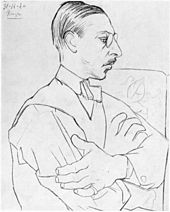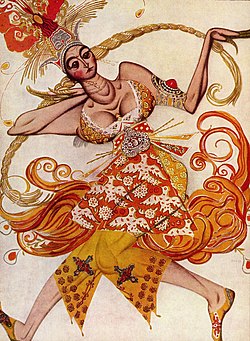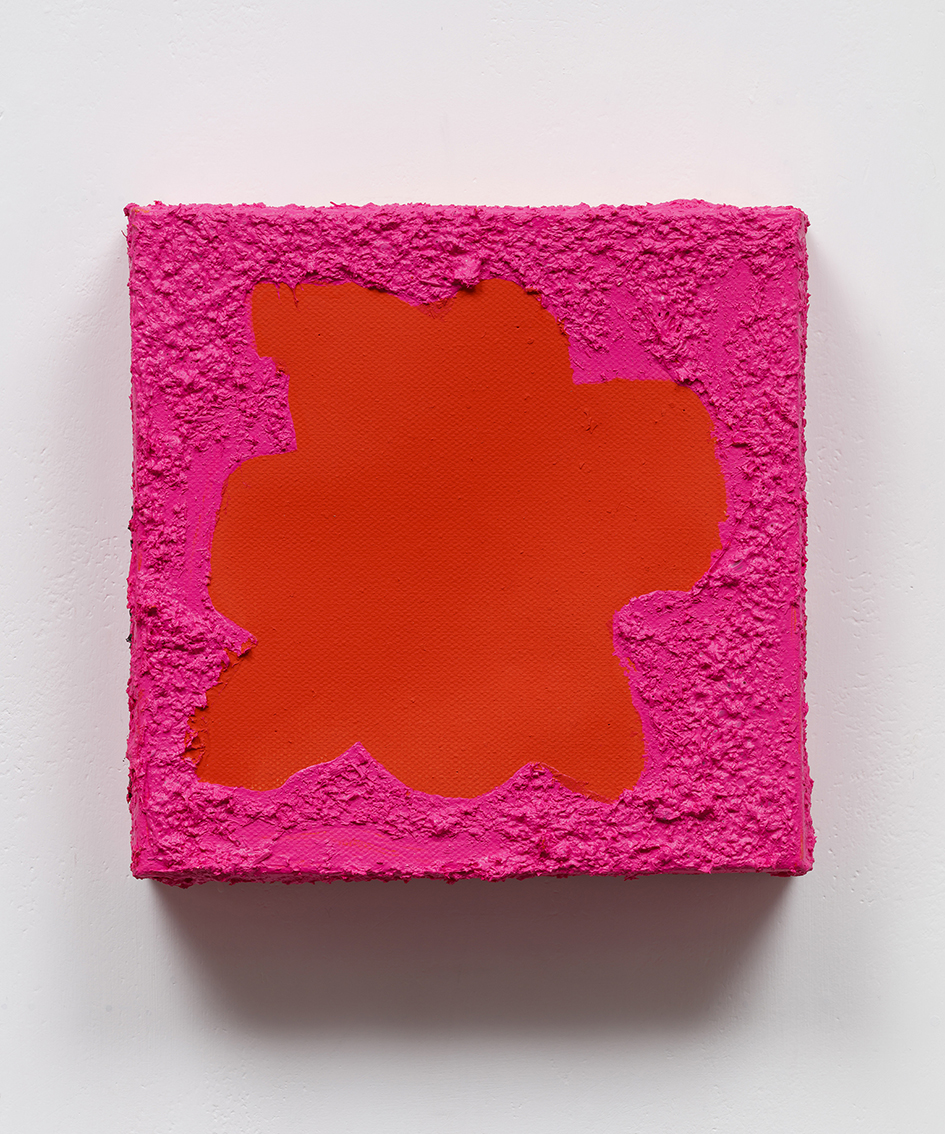|
●★ Igor Stravinsky :『The Firebird - l'Oiseau de Fou - 불새』★●
Pierre Boulez(Conductor) & Chicago Symphony Orch.
■ Igor Stravinsky - The Firebird ■● The Firebird, French title L'oiseau de feu (Russian: Жар-птица, Zhar-ptitsa) is a ballet and orchestral concert work by the Russian composer Igor Stravinsky. It was written for the 1910 Paris season of Sergei Diaghilev's Ballets Russes company, with choreography by Michel Fokine. The ballet is based on Russian folk tales of the magical glowing bird of the same name that is both a blessing and a curse to its captor. When the ballet was first performed on 25 June 1910, the critics were enthusiastic. Stravinsky was a young, virtually unknown composer when Diaghilev recruited him to create works for the Ballets Russes. The Firebird was his first project. Originally, Diaghilev approached the Russian composer Anatoly Lyadov, but later hired Stravinsky to compose the music. The ballet has historic significance not only as Stravinsky's breakthrough piece — "Mark him well", said Sergei Diaghilev to Tamara Karsavina, who was dancing the title role: "He is a man on the eve of celebrity..." — but also as the beginning of the collaboration between Diaghilev and Stravinsky that would also produce Petrushka and The Rite of Spring.
● Background

Stravinsky, sketched by Picasso Igor Stravinsky was the son of Fyodor Stravinsky, the principal bass at the Imperial Opera, St Petersburg, and Anna, née Kholodovskaya, a competent amateur singer and pianist from an old-established Russian family. Fyodor's association with many of the leading figures in Russian music, including Rimsky-Korsakov, Borodin and Mussorgsky, meant that Igor grew up in an intensely musical home.[1] In 1901 Stravinsky began to study law at St Petersburg University, while taking private lessons in harmony and counterpoint. Having impressed Rimsky-Korsakov with some of his early compositional efforts, Stravinsky worked under the guidance of the older composer. By the time of his mentor's death in 1908 Stravinsky had produced several works, among them a Piano Sonata in F-sharp minor (1903–04), a Symphony in E-flat major (1907), which he catalogued as "Opus 1", and in 1908 a short orchestral piece, Feu d'artifice ("Fireworks").[2][3]
In 1909 Feu d'artifice was performed at a concert in St Petersburg. Among those in the audience was the impresario Sergei Diaghilev, who at that time was planning to introduce Russian music and art to western audiences.[4] Like Stravinsky, Diaghilev had initially studied law, but had gravitated via journalism into the theatrical world.[5] In 1907 he began his theatrical career by presenting five concerts in Paris; in the following year he introduced Mussorgsky's opera Boris Godunov. In 1909, still in Paris, he launched the Ballets Russes, initially with Borodin's Polovtsian Dances from Prince Igor and Rimsky-Korsakov's Scheherazade. To present these works Diaghilev recruited the choreographer Michel Fokine, the designer Léon Bakst and the dancer Vaslav Nijinsky. Diaghilev's intention, however, was to produce new works in a distinctively 20th century style, and he was looking for fresh compositional talent.[6]
● Genesis and premiereThe ballet was the first of Diaghilev's Ballets Russes productions to have an all-original score composed for it. Alexandre Benois wrote in 1910 that he had two years earlier suggested to Diaghilev the production of a Russian nationalist ballet,[7] an idea all the more attractive given both the newly awakened French passion for Russian dance and also the ruinously expensive costs of staging opera. The inspiration of mixing the mythical Firebird with the unrelated Russian tale of Kaschei the deathless possibly came from a popular child's verse by Yakov Polonsky, "A Winter's Journey" (Zimniy put, 1844), which includes the lines:
Benois collaborated with the choreographer Michel Fokine, drawing from several books of Russian fairy tales including the collection of Alexander Afanasyev, to concoct a story involving the Firebird and the evil magician Kashchei.
Diaghilev approached the Russian composer Anatoly Lyadov (1855–1914) to write the music.[9] There is no evidence, however, despite the much-repeated story that Lyadov was slow to start composing the work, that he ever accepted the commission to begin with.[10] There is evidence to suggest that Nikolai Tcherepnin had previously started composing music for the ballet—music which became The Enchanted Kingdom—but that Tcherepnin, for reasons unexplained, withdrew from the project.[11] Diaghilev eventually transferred the commission to the 28-year-old Stravinsky.
The ballet was premiered by the Ballets Russes in Paris on 25 June 1910 conducted by Gabriel Pierné.[12] Even before the first performance, the company sensed a huge success in the making; and every performance of the ballet in that first production, as Karsavina recalled, met a "crescendo" of success.[13] The critics were ecstatic, praising the ballet for what they perceived as an ideal symbiosis between decor, choreography and music: "The old-gold vermiculatino of the fantastic back-cloth seems to have been invented to a formula identical with that of the shimmering web of the orchestra" enthused Henri Ghéon in Nouvelle revue française (1910).[14] The scenery was designed by Alexander Golovine and the costumes by Leon Bakst.
For Stravinsky, it was a major breakthrough both with the public and with the critics, Michel-Dimitri Calvocoressi in particular hailing Stravinsky as the legitimate heir to The Mighty Handful.[15] The Firebird's success also secured Stravinsky's position as Diaghilev's star composer, and there were immediate talks of a sequel,[16] leading to the composition of Petrushka and The Rite of Spring.
Stravinsky used principle themes from works by Rimsky-Korsakov in his score. Kashchei's "Infernal Dance" borrows the highly chromatic scale Rimsky-Korsakov created for the character Chernobog in his opera Mlada. The Khorovod dance, meanwhile, uses the same folk tune Rimsky-Korsakov presented in his "Sinfonietta" Opus. 31.
● Subsequent ballet performancesMain article: List of Firebird
casts
The ballet was revived in 1934 by Colonel Wassily de Basil's company, the Ballets Russes de Monte-Carlo, in a production staged in London, using the original decor and costumes from Diaghilev's company.[17] The company subsequently performed the ballet in Australia, during the 1936–37 tour.[18]
The ballet was staged by George Balanchine for the New York City Ballet in 1949 with Maria Tallchief as the Firebird with scenery and costumes by Marc Chagall, and was performed in repertory until 1965. The ballet was restaged by George Balanchine and Jerome Robbins in 1970 for the New York City Ballet with elaborated scenery by Chagall, and with new costumes by Karinska based on Chagall's for the 1972 Stravinsky Festival that introduced Gelsey Kirkland as the Firebird.[19] The Mariinsky Ballet performed the original choreography at Covent Garden in August 2011 as part of their Fokine retrospective.
The National Ballet of Canada created a version of the Firebird Ballet for television, occasionally rebroadcast, in which special effects were used to make it appear that the firebird is in flight. On 29 March 2012, American Ballet Theatre premiered the Firebird, starring Misty Copeland, with choreography by Alexei Ratmansky at the Segerstrom Center for the Arts in Costa Mesa, California.
● Story

Léon Bakst: Firebird,
Ballerina, 1910 The ballet centers on the journey of its hero, Prince Ivan. Ivan enters the magical realm of Kashchei the Immortal; all of the magical objects and creatures of Kashchei are herein represented by a chromatic descending motif, usually in the strings. While wandering in the gardens, he sees and chases the Firebird. The Firebird, once caught by Ivan, begs for its life and ultimately agrees to assist Ivan in exchange for eventual freedom.
Next, Prince Ivan sees thirteen princesses, with one of whom he falls in love. The next day, Ivan chooses to confront Kashchei to ask to marry one of the princesses; the two talk and eventually begin quarreling. When Kashchei sends his magical creatures after Ivan, the Firebird, true to its pledge, intervenes, bewitching the creatures and making them dance an elaborate, energetic dance (the "Infernal Dance"). The creatures and Kashchei then fall asleep; however, Kashchei awakens and is then sent into another dance by the Firebird. While Kashchei is bewitched, the Firebird tells Ivan the secret to Kashchei's immortality – his soul is contained inside an enormous, magical egg. Ivan destroys the egg, killing Kashchei. With Kashchei gone and his spell broken, the magical creatures and the palace all disappear. All of the "real" beings, including the princesses, awaken and with one final hint of the Firebird's music (though in Fokine's choreography she makes no appearance in that final scene on-stage), celebrate their victory.
● VersionsBesides the complete 50-minute ballet score of 1909–10 (written for a very large orchestra including double woodwind and three harps, as well as a piano), there are three shorter 'suites', arranged by the composer himself for concert performance. These date from 1911, 1919 and 1945. While the 1919 suite remains the most well known and often played, the 1945 version contains the most music from the original ballet score (partly motivated by the need to secure copyright in a USA that did not recognize European agreements).
There is no consensus for the precise naming of either the different versions, or of the movements, or the numbering of the movements. Different recordings tend to follow different naming conventions. While this partly might be due to the English translation from the original French names, some recordings of the orchestral suites even avoid referring to the tale by just calling the movements by their tempo markings (i.e., Adagio, Allegro, etc.) or the name of the musical form (i.e., Scherzo, Rondo, etc.).
Many adaptations of the Firebird Suite for concert band, marching band and drum corps have been made throughout the years. There are also multiple versions of the choreography for The Firebird—for example, Graeme Murphy's 2009 version.
● 1910 Ballet Score (aka "Fairy-tale ballet in two tableaux for orchestra")
Orchestration: 4 flutes (3rd & 4th also Piccolo); 3 oboes; cor anglais; 3 clarinets (3rd also D Clarinet); bass clarinet; 3 bassoons (2nd also 2nd contrabassoon); contrabassoon; 4 horns; 3 trumpets; 3 trombones; tuba; 3 trumpets (onstage); 4 Wagner tubas (two tenor and two bass, onstage); timpani; bass drum; cymbals; triangle; tambourine; tamtam; tubular bells; glockenspiel; xylophone; celesta; 3 harps; pianoforte; strings.
● 1911 Suite (aka "Concert suite for orchestra No. 1")

Ivan Bilibin. A
warrior (1) Introduction – Kashchei's Enchanted Garden – Dance of the Firebird; (2) Supplication of the Firebird; (3) The Princesses’ Game with Apples; (4) The Princesses’ Khorovod (Rondo, round dance); (5) Infernal dance of all Kashchei's Subjects.
Orchestration: essentially as per the original ballet—the score was printed from the same plates, with only the new endings for the movements being newly engraved. Some recordings will list movement no. 1) as three movements. In 1928, Stravinsky conducted a group of Parisian musicians in a recording of this suite for Columbia Records, which was released on a set of 12-inch 78-rpm discs. The Kalmus orchestral score for this suite is dated "1910", while Luck's Music publishes this version as "1912" The 2005 remastered edition on Sony with conductor Pierre Boulez calls it "Ballet suite for orchestra", while in 1991 Sony called it "Suite, 1910".
● 1919 Suite (aka "Concert suite for orchestra No. 2")(1) Introduction—The Firebird and its dance—The Firebird's variation; (2) The Princesses’ Khorovod (Rondo, round dance); (3) Infernal dance of King Kashchei; (4) Berceuse (Lullaby); (5) Finale. Orchestration: 2 Flutes (2nd also Piccolo); 2 Oboes (2nd also English Horn for one measure); 2 Clarinets; 2 Bassoons; 4 Horns; 2 Trumpets; 3 Trombones; Tuba; Timpani; Bass Drum; Tambourine; Cymbals; Triangle; Xylophone; Chimes (Tubular Bells); Harp; Pianoforte (also opt. Celesta); Strings. Some recordings will list movement no. 1) as two or three movements. It is sometimes also referred to as a "Symphonic Suite". ● 1945 Suite (aka "Ballet suite for orchestra")
| ||||
|
| ||||
'Lecture Concert' 카테고리의 다른 글
| 차이콥스키 - 피아노 트리오 (0) | 2015.07.14 |
|---|---|
| 스트라빈스키<봄의 제전> (0) | 2015.07.14 |
| 에릭사띠 - 짐노페디 (0) | 2015.07.14 |
| 모차르트 교향곡 40번 (0) | 2015.07.13 |
| 모차르트 교향곡 39번 (0) | 2015.07.13 |
